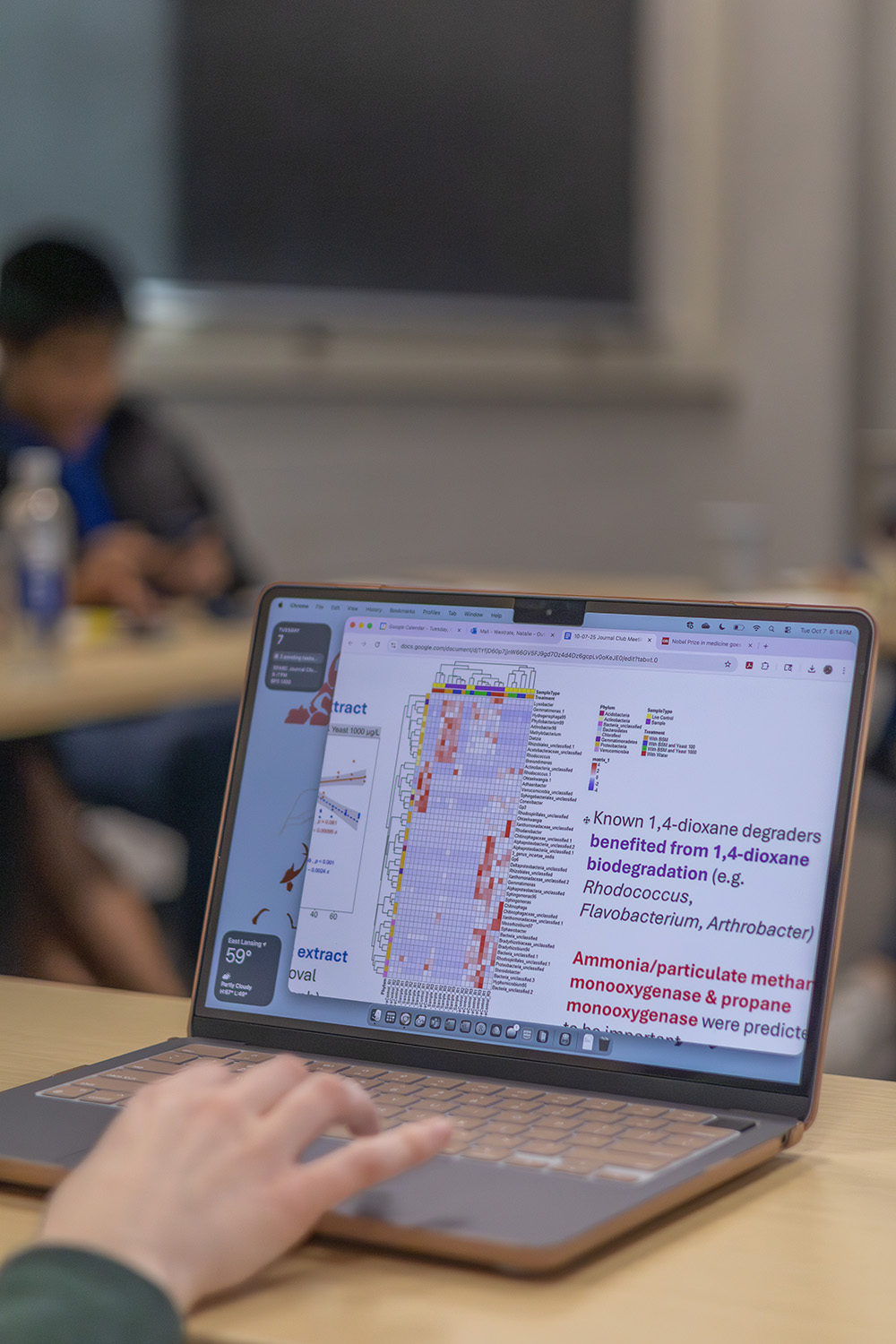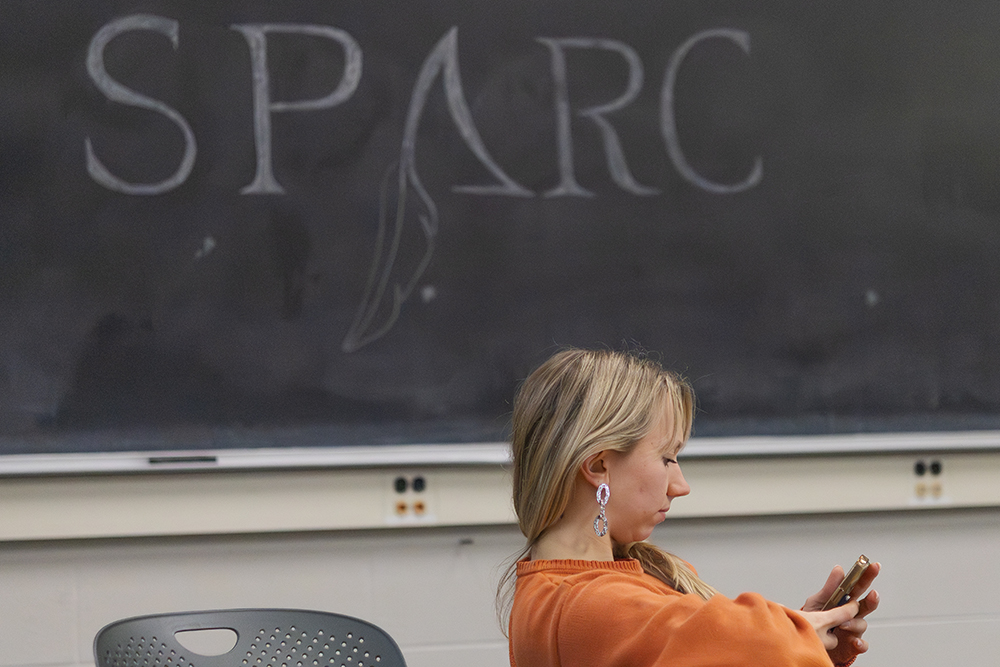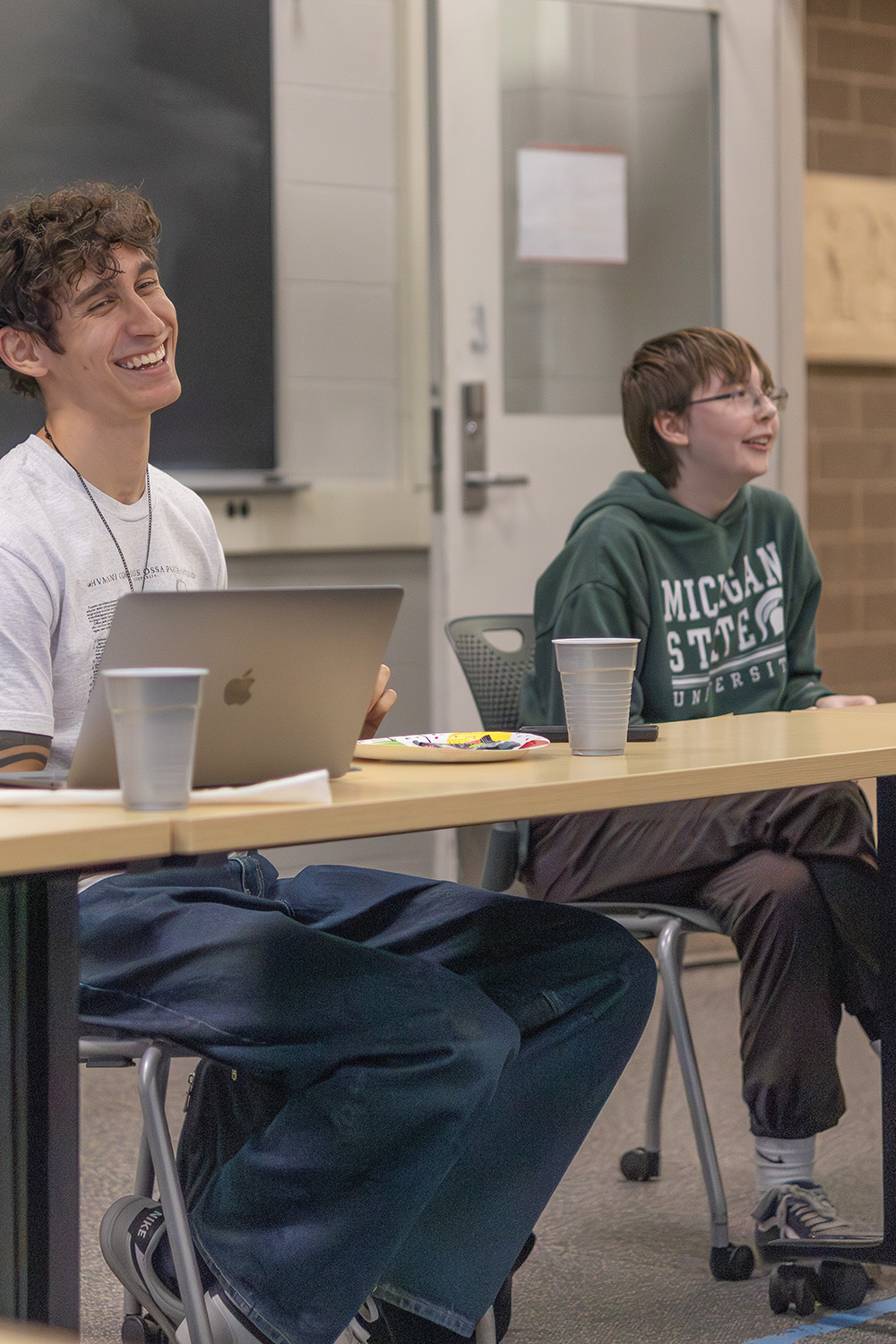
Student Papers in Academic Research Collaborative created a journal club to inspire discussion about scientific research and make it more accessible to students.
Gathered around a giant wooden table, apple cider and pumpkin treats in-hand, students prepared to begin yet another spirited discussion. Members of the Student Papers in Academic Research Collaborative started Journal Club, a supportive space for students to talk through research that interested them.
In Journal Club, students read a particular research article each week and were able to ask questions, give their opinions and learn about various subjects. Founders of the Journal Club hoped this would allow students to get more comfortable with complex research papers.
“We wanted to have SPARC and the overall publication, and we've been very successful in recent years, and then we've had our Journal Club efforts pretty consistently, too,” said Nicholas Feys, a fourth-year student studying human biology and Spanish, and co-founder of SPARC. “So that was kind of a forum where we could get undergraduate students to talk about research, not only that they've conducted, but just research at MSU, because we're a tier one research school.”

Beyond the technical side of understanding research articles, Journal Club gave students a chance to explore their different interests. Having conversations about research throughout multiple disciplines allowed for students to go beyond what was simply written in papers.
“I think that scientific interest is contagious,” said Natalie Westrate, a second-year student studying neuroscience and biochemistry and molecular biology, and vice president of the club. “I think that if you have thoughts or opinions or ideas on one topic and you start talking about it, you're going to come up with things about other topics, it just bleeds into each other.”
Leaders of the club emphasized the importance of research in the real world. They hoped the discussions within it would help students gain necessary skills they could utilize in various future settings.

“I think the key for a journal club is we really just want to destigmatize all of, not even just STEM, but research in general, the process,” Feys said. “Research is such a pervasive part of how leaders make decisions in this world and also just about how we perceive things as well. Understanding [what] we've come to in recent years is kind of the direct result of years and years and years of research.”
To drive home participants’ abilities to use research in and beyond the classroom, Journal Club focused on helping each student understand the complexities of the process. Bouncing ideas off of one another was a key pillar of the organization.
“I think in general there can be a fear about research,” Westrate said. “I know the first time I was in a class and I had to read an actual scientific article, I was terrified. [...] So I think any time that we can sit down and talk about that together, there's even a little bit of comfort in realizing that we all kind of feel that way at first. Being able to work through it together and realize, hey, it's not so scary. We can figure it out.”
The Journal Club allowed students to explore complex interests without judgment. Students gained confidence in their skills while also forming a community based on shared passions.